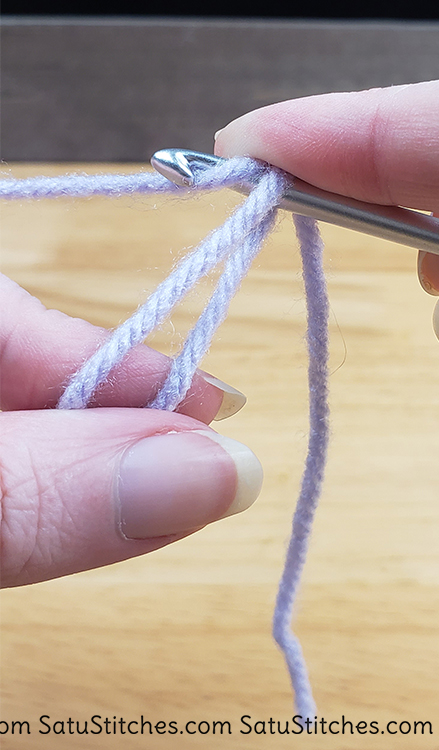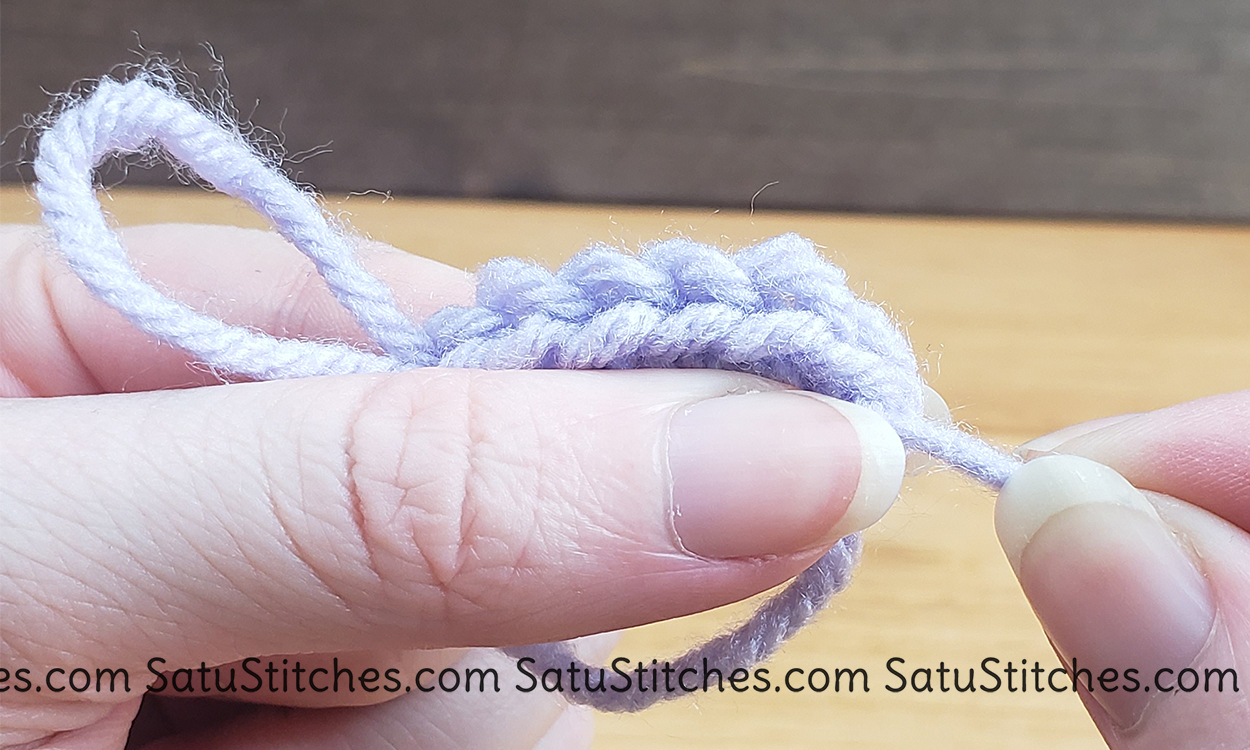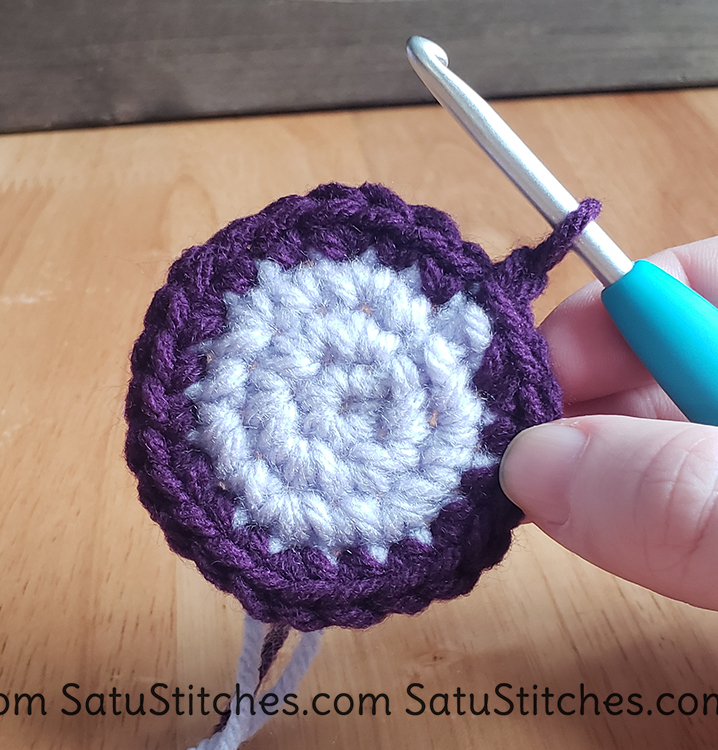Chain 2 Method
The chain 2 method, in my opinion, is an extremely easy way to start a round for beginners. It doesn’t add any new techniques but rather uses what you know already to create it. If you’re having trouble with the magic circle I suggest this method. This can sometimes cause problems with leaving a gap if there are too many stitches being added.
Sloppy Slip Knot Method
Now, this is a new way I just recently learned to make a circle. It’s super easy and definitely a contender for the easiest way. Definitely give this way a go and let me know what you think!
Often times, regardless of which method you prefer you’ll finish off your initial ring with a slip stitch. There are different techniques when working with rounds, but I’ll cover that in a later course. Right now, just get comfortable with making a round.
Working in a Round
Unlike flat square pieces, working in a round is a little harder in knowing when to start and stop. When you hit the end of a row you know you have. With rounds, you are continuously working with no obvious stop. Because of this, a stitch marker is recommended. You can use actual stitch markers, or you can even use a spare piece of yarn.
Continuous Round
Most Amigurumi is worked in a continuous round. Meaning, you are not chaining up the height level after each row. Instead, you are just continuing your stitches. This creates a subtle spiral in your pieces. Notice the last picture with the color change. See the obvious spiral. It also highlights a slight issue when you are working in continuous rounds: color changes are obvious.



































Recent Comments